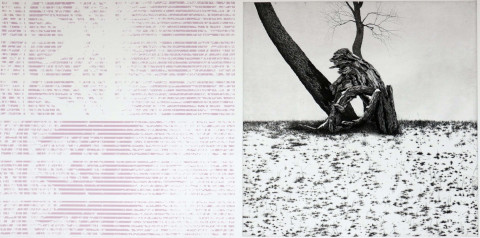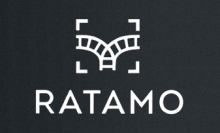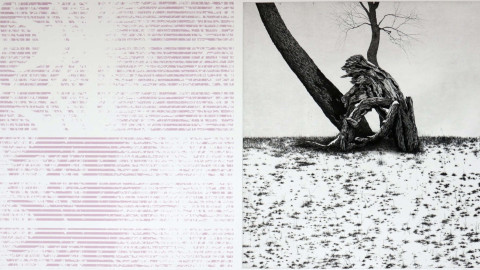Tomas Zemla: Interfields
12.12.2019-5.1.2020
Tomas Zemla on slovakialainen kuvataiteilija, ja tämä on hänen ensimmäinen näyttelynsä Suomessa. Zemla on kasvanut peltojen keskellä, mikä on vaikuttanut hänen taiteeseensa. Hän näkee pellot hyvin visuaalisena elementtinä, niiden horisontaalisuus ja minimalismi näkyvät hänen taiteessaan.
* * * * * *
Fields are an identification code for me. Fields are part of my identity, a part of how I have learned to live.
I grew up in a small village in the flatlands of western Slovakia, with few opportunities to get away, in the middle of fields that were clearly identified as a cultivated piece of land, a means of production and making a living. At that time fields did not come across to me as a source of strong visual perception.
But even though I might have been unaware of that, they have been deposited within my subconscious.
I remember the moments of my childhood, those endless hot summers that I and my friends would spend in the shadows of the bushes and trees in the boscages that divide fields from each other. We would build our bunkers to play and dams out of the mud in the draining canals.
In my family, the respect to the field as such has been part of our DNA code. My father is an agronomist by profession, and therefore fields have played an important role in his life and the life of his family.
Having said this, it is clear to see why my artworks are centred around fields. As time progressed, my view of the fields has changed, going from their physical, bread-giving importance, to the source of a significant visual impulse.
I see fields as a vast source of visual opportunities, such as their absolute horizontality, the perspective of infinity, their purity, the minimalism bordering on utility.
Beside these formal characteristics, there are deeper perceptions that fields leave with me, in their details that I came to love over the years: the wind gusts that turn the fields into a wavy sea surface, the transformation of the wheat spikelets, when within a few days the tops of the plants grow ripe and yellow while the bottom parts are still green, the whole process that makes one and the same field look very different in different moments in time: covered in snow, freshly ploughed, or just harvested. I see a great visual sense in each such moment of this process.
In my works, I try to capture this atmosphere of the fields using my own painting technique. I proceed by painting tiny lines, one next to another, almost always in many layers. The final picture is made of hundreds of thousands of tiny lines that overlap and help me convey the impression of my imagination. In the small spaces between the little lines that I call the inter-layer space, details emerge that remind me of the knowledge about the fields that I have captured and perceived throughout my life.
I preserve strict horizontality in my artworks and in the way I plan the space. That horizontality is very characteristic for me, I often change colours, because it is not just the original that is important to me but also the feeling and the perception that has changed over time and during the artistic process.
I like expressing myself through narratives: in absolute minimality, I put forward a certain naturalistic detail that shifts the perception of the image from abstract to natural. This is probably my favourite part of the artistic process, when I erase the lines between the abstract image, translate it into naturalist, and then back to abstract. It is an infinite process of creation, and of erasing the limits of my visual perception.
In the recent years I have worked my way from painting to naturalist graphic, which is simultaneous with my painting technique.
Using the aquatint technique I draw tiny lines on a copper plate. I create several matrixes that I then colour with various colours during the print. The result is printed in the form of layered print. This allows me to create an impression similar to my painting technique. That is the reason why I do not like to be labelled a painter or a printmaker. That is not how I see myself. For me, the technique does not constitute the character of the artist but merely completes and enriches it. This way, I have been able to study field forms from several angles, regarding form, content, and technique. I keep discovering new possibilities of representation.

Testimony of minimalism man touched land VIII, syväpaino, akvatinta, silkkipaino, 75x120cm, 2018

